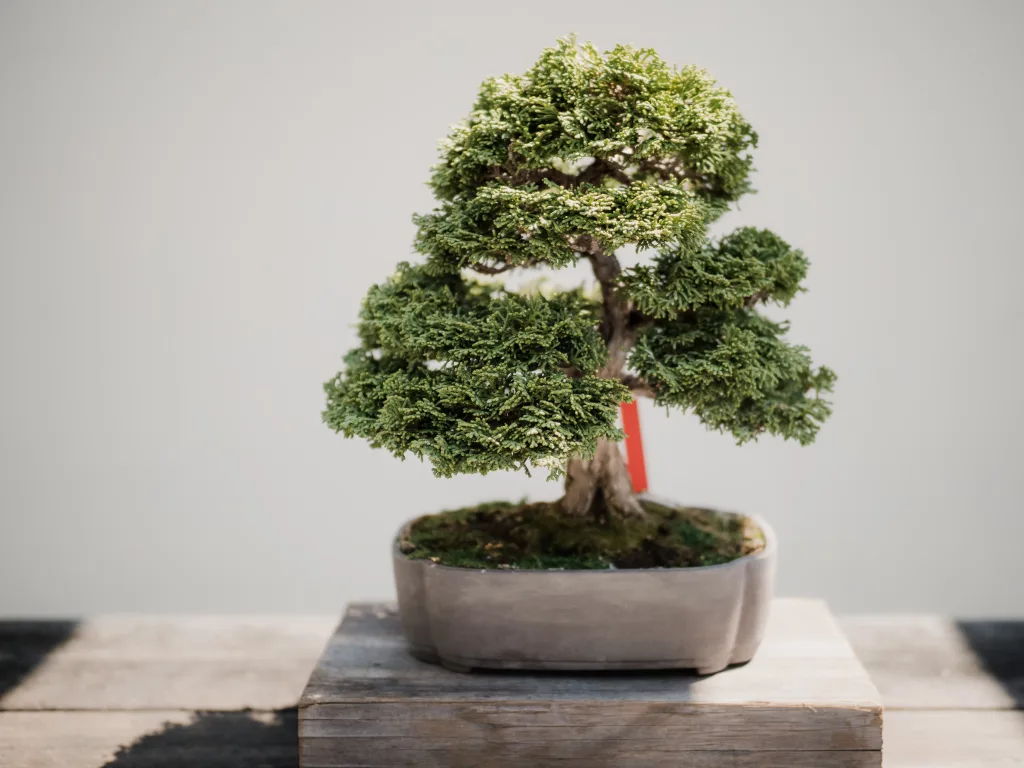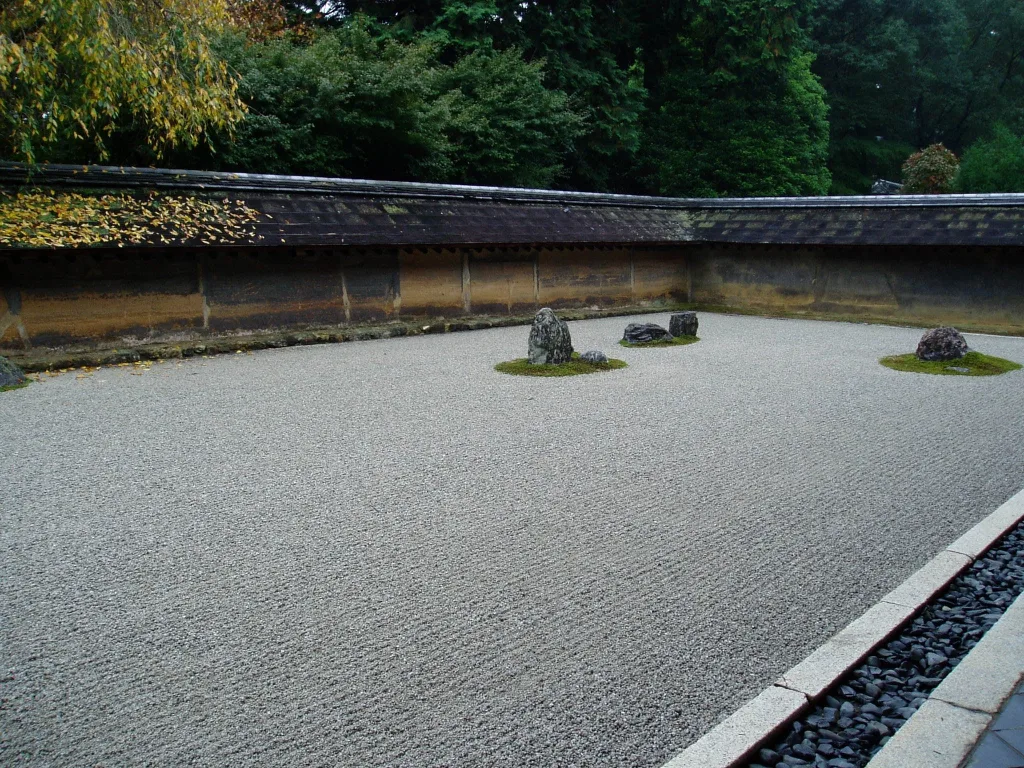Explore the harmonious relationship between Zen gardens and larger landscape designs as we delve into the question of whether these serene spaces can seamlessly integrate into a wider outdoor setting. Discover how the principles of balance, simplicity, and tranquility can be embraced within a larger landscape design, creating a space that invites contemplation and relaxation. Join us as we explore the possibilities of incorporating Zen gardens into your outdoor oasis.
Understanding Zen Gardens
Origins of Zen Gardens
Zen gardens, also known as Japanese rock gardens, originated in Japan during the Muromachi Period (1336-1573). They were created by Zen Buddhist monks as a means of meditation and contemplation. Originally, Zen gardens were found exclusively within Buddhist temples, but they eventually gained popularity among aristocrats and samurais, spreading to private residences as well.
Philosophy behind Zen Gardens
Central to the philosophy of Zen gardens is the concept of wabi-sabi, which embraces imperfection and transience. Zen practitioners seek to find beauty in simplicity, asymmetry, and natural elements. These gardens aim to evoke a sense of tranquility and Zen principles such as mindfulness, harmony, and balance.
Key elements of Zen Gardens
Zen gardens typically consist of several key elements that contribute to their unique design and atmosphere. These include rocks, sand or gravel, moss, water features, and carefully placed vegetation. Each element holds symbolic meaning, representing different aspects of nature and the human experience. The arrangement of these elements is done with great care and precision, creating a sense of harmony and serenity.
Why Include a Zen Garden in Your Landscape
Creating a Space for Meditation
One of the main reasons to include a Zen garden in your landscape is to create a tranquil space for meditation and relaxation. The serene and minimalist design of a Zen garden provides an ideal environment for practicing mindfulness and finding inner peace. Whether you are a beginner or an experienced meditator, having a dedicated space for reflection can greatly enhance your meditation practice.
Adding Aesthetic Value
In addition to the meditative benefits, Zen gardens also add aesthetic value to your larger landscape design. The clean lines, carefully placed rocks, and meticulous arrangement of elements create a visually pleasing and harmonious atmosphere. The simplicity of Zen gardens can complement a variety of architectural styles and blend seamlessly with different garden designs, making them a versatile addition to any landscape.
Promoting Environmental Sustainability
Zen gardens often incorporate natural and indigenous elements, promoting sustainability within your landscape. By selecting locally sourced plants and materials, you can reduce the carbon footprint associated with landscaping while encouraging biodiversity. Additionally, the use of drought-tolerant plants and efficient irrigation systems in Zen gardens promotes water conservation.

Incorporating Zen Gardens into Large Landscapes
Assessing the Suitability of Your Landscape
Before incorporating a Zen garden into your larger landscape, it is essential to assess the suitability of your existing space. Consider factors such as the size of the area, the availability of sunlight, and the overall layout. Zen gardens can be enjoyed in both large and small landscapes, as long as the space allows for the necessary elements to be properly incorporated.
Choosing the Right Location within Your Landscape
When selecting the location for your Zen garden, choose an area that receives ample natural light and provides a sense of privacy. The garden should be easily accessible and visible from your home or preferred viewing spots. Consider nearby elements such as trees, buildings, or other landscape features that may impact the overall aesthetic and ambiance.
Deciding on the Size and Scale of the Zen Garden
The size and scale of your Zen garden will depend on the available space and your personal preferences. While larger landscapes can accommodate spacious Zen gardens, even small courtyards or balconies can be transformed into miniature Zen retreats. Remember to maintain balance and proportion in relation to the surrounding landscape, ensuring that the Zen garden feels integrated rather than overwhelming.
Design Elements to Consider When Integrating a Zen Garden
Balancing Natural Elements
One of the fundamental aspects of Zen garden design is the balance between natural elements. Rocks represent mountains, and fine gravel or sand symbolize flowing water. By strategically placing these elements, you can create a sense of harmony and mimic the layout of natural landscapes. The juxtaposition of smooth pebbles and rough rocks brings a dynamic contrast that adds visual interest to the garden.
Importance of Minimalistic Design
Zen gardens embody a minimalist design philosophy, favoring simplicity and avoiding unnecessary ornamentation. The absence of excessive decoration allows the mind to focus on the present moment and cultivates a sense of tranquility. Opt for clean lines, uncluttered spaces, and a limited color palette to create a visually calming environment.
Understanding the Symbolism in Zen Design Elements
Each element in a Zen garden holds symbolic meaning and contributes to the overall atmosphere. Rocks symbolize stability and strength, while sand or gravel represents water and fluidity. By arranging rocks and raking patterns in the gravel, you can evoke the imagery of ripples in a pond or the flow of a river. The placement of plants and moss adds a touch of life and vitality to the garden.

Practical Steps to Creating a Zen Garden within Your Landscape
Step-by-step Process of Creating a Zen Garden
- Clear the designated area: Start by removing any existing vegetation or structures that may obstruct the Zen garden.
- Plan the layout: Sketch out a rough design of how you envision your Zen garden, considering the placement of rocks, plants, and other elements.
- Prepare the base: Level the soil and lay a weed barrier to prevent unwanted vegetation from growing in the garden. Alternatively, install a sand or gravel base for a more authentic Zen garden experience.
- Place rocks: Arrange rocks according to your design, ensuring they are securely placed and balanced.
- Add plants and moss: Introduce low-maintenance plants and moss to bring an organic touch to the garden. Choose species that thrive in your climate and require minimal care.
- Rake patterns in the gravel: Experiment with different patterns and rake the gravel or sand to create ripples or waves, reminiscent of flowing water.
- Maintain the garden: Regularly weed, prune, and rake the Zen garden to keep it in pristine condition.
Choosing the Right Plants and Rocks
When selecting plants for your Zen garden, choose species that require minimal maintenance and align with the overall design aesthetic. Evergreen plants, such as Japanese maple or bamboo, are popular choices due to their year-round appeal and ability to create a sense of privacy. As for rocks, choose ones that have interesting shapes and textures, evoking a natural and serene atmosphere.
Maintenance Advice for Zen Gardens
Maintaining a Zen garden entails regular upkeep to ensure its beauty and serenity are preserved. Here are some maintenance tips to keep in mind:
- Rake the gravel or sand regularly to maintain the desired patterns and smoothness.
- Trim and prune plants to prevent overgrowth and maintain a neat appearance.
- Remove weeds to preserve the Zen garden’s cleanliness and aesthetic appeal.
- Check and adjust rocks periodically to ensure they remain securely positioned.
- Oversee the water features, if any, to prevent stagnation or debris buildup.
Case Studies of Successful Zen Garden Integration
Case Study 1: A Residential Zen Garden
In this case study, a Zen garden was integrated into a residential landscape with limited space. By carefully selecting the appropriate plants, rocks, and elements, the homeowner created a serene and meditative oasis in their backyard. The minimalistic design and attention to detail allowed for a seamless integration of the Zen garden, offering a place of respite from the busyness of daily life.
Case Study 2: Public Zen Gardens in Parks
Public parks are ideal locations for Zen gardens, as they provide a tranquil space for visitors to relax and find peace amidst nature. In this case study, a Zen garden was successfully integrated into a large park, offering a serene retreat for visitors. The careful planning of the garden’s location, size, and design elements ensured that it blended harmoniously with the park’s natural landscape while providing a unique and contemplative experience for park-goers.
Case Study 3: Corporate Zen Gardens
In this case study, a Zen garden was incorporated into a corporate setting, providing employees with an outdoor space for meditation and relaxation. The Zen garden acted as a refuge from the demands of work, offering a quiet and calming environment to restore focus and balance. The design elements were carefully chosen to promote mindfulness and well-being, ultimately enhancing employee satisfaction and productivity.

Challenges Experienced while Merging Zen Gardens and Large Landscapes
Balancing Aesthetics with Functionality
One of the main challenges in merging Zen gardens with larger landscapes is finding a balance between aesthetics and functionality. While Zen gardens are primarily focused on creating a tranquil and meditative atmosphere, it is crucial to ensure that they also serve a practical purpose within the overall landscape design. This can involve incorporating seating areas, walkways, or other elements that allow for the garden to be enjoyed and utilized effectively.
Maintaining the Integrity of the Zen Garden
As Zen gardens are often designed with meticulous attention to detail and carefully arranged elements, it can be challenging to maintain their integrity over time. Natural factors such as weather, plant growth, and erosion can impact the garden’s appearance and layout. Regular maintenance and periodic adjustments are necessary to preserve the original design intent and ensure that the Zen garden remains a peaceful sanctuary within the larger landscape.
Scale and Proportion Challenges
When integrating a Zen garden into a larger landscape, scale and proportion must be carefully considered. Oversized or undersized elements can disrupt the overall harmony and balance of the garden. It is essential to choose rocks, plants, and other features that are proportionate to the size of the garden and complement the surrounding landscape. Proper scaling ensures that the Zen garden feels cohesive and seamlessly integrated into the overall design.
Benefits of Having a Zen Garden within a Larger Landscape
Benefits in Terms of Health and Well-being
The presence of a Zen garden in a larger landscape can have significant benefits for mental and physical well-being. The tranquil and meditative environment promotes stress reduction, relaxation, and improved focus. Additionally, spending time in nature has been shown to boost mood, enhance creativity, and improve overall mental health. Thus, having a Zen garden within your landscape can contribute to a healthier and more balanced lifestyle.
Increasing Property Value
A well-designed and meticulously maintained Zen garden can significantly increase the value of your property. Prospective buyers or tenants often appreciate the added aesthetic and meditative value that a Zen garden brings to a landscape. The unique and timeless appeal of Zen gardens can set your property apart from others in the real estate market, attracting potential buyers and enhancing the overall desirability of the space.
Promoting Biodiversity in the Landscape
Zen gardens that incorporate native and drought-tolerant plants contribute to the promotion of biodiversity within the larger landscape. By selecting plant species that are well-adapted to the local environment, you can provide habitat and food sources for various wildlife, including birds, insects, and small mammals. Creating a balanced ecosystem within your Zen garden enhances the overall ecological value of your landscape.
Future Trends in Zen Garden Landscape Design
Influence of Technology on Zen Garden Design
As technology continues to advance, there is a growing trend of integrating smart features into Zen garden design. This includes automated irrigation systems, lighting controls, and remote monitoring capabilities. These technological advancements not only enhance convenience but also contribute to the overall sustainability and preservation of Zen gardens.
Emerging Trends in Plant Selection
In recent years, there has been a shift towards choosing native and low-maintenance plants for Zen gardens. This trend emphasizes the importance of preserving local biodiversity and reducing water consumption. Additionally, the incorporation of edible plants, such as herbs or fruit trees, has become popular, allowing Zen garden owners to enjoy the benefits of homegrown produce while maintaining the garden’s meditative ambiance.
Predicted Impacts of Climate Change on Zen Gardens
The effects of climate change are likely to have significant implications for Zen garden landscape design in the future. Rising temperatures, changes in precipitation patterns, and increased frequency of extreme weather events may require gardeners to adapt their plant and water management strategies. Drought-resistant plants, efficient irrigation systems, and rainwater harvesting techniques may become increasingly important in maintaining the sustainability and longevity of Zen gardens.
Taking Care of Your Zen Garden in a Larger Landscape
Routine Maintenance Guidelines
Regular maintenance is essential to ensure your Zen garden remains in optimal condition. Schedule routine tasks such as weeding, raking, pruning, and cleaning. Additionally, check and maintain any water features or irrigation systems to prevent issues such as leaks or stagnation.
Seasonal Care for the Zen Garden
Different seasons require varying levels of maintenance for a Zen garden. In the spring, focus on pruning and removing dead plant material. Summer may necessitate more frequent watering and weeding, while fall presents an opportunity to adjust the garden’s layout and prepare for the winter. During winter, protect any delicate plants or features from frost or extreme weather conditions.
Tips for Keeping Your Zen Garden Looking Its Best
- Regularly rake the gravel or sand to maintain clean lines and patterns.
- Avoid over-planting or overcrowding the garden, as it can disrupt the garden’s minimalistic aesthetic.
- Use organic mulch or compost to enhance soil fertility and moisture retention.
- Monitor pests and promptly address any infestations to prevent damage to plants.
- Consider incorporating wind chimes or other sound elements to enhance the overall sensory experience.
In conclusion, Zen gardens can indeed be a harmonious part of a larger landscape design. They offer a sanctuary for meditation, enhance the aesthetic appeal of the landscape, promote environmental sustainability, and provide numerous health benefits. By carefully assessing your landscape, selecting appropriate locations and elements, and considering design principles, you can successfully incorporate a Zen garden into your outdoor space. With proper maintenance and regular care, your Zen garden will continue to bring tranquility and serenity to your larger landscape for years to come.




